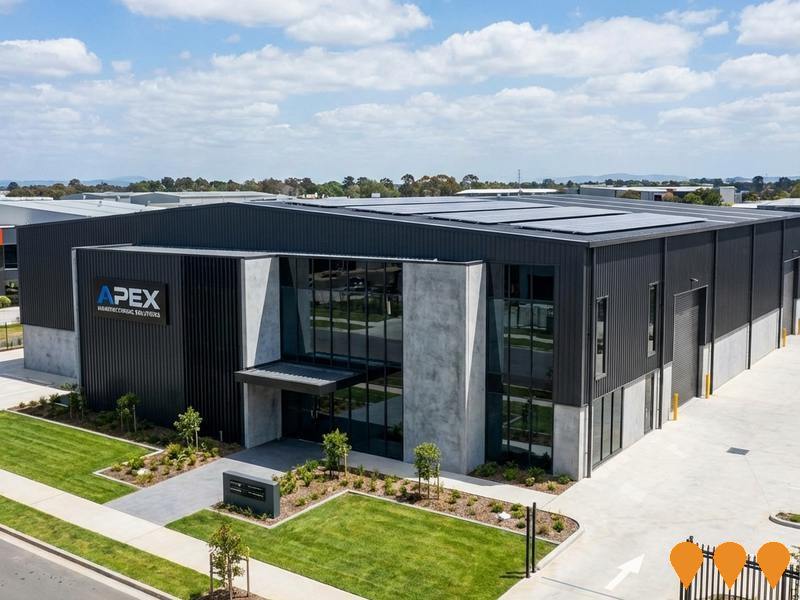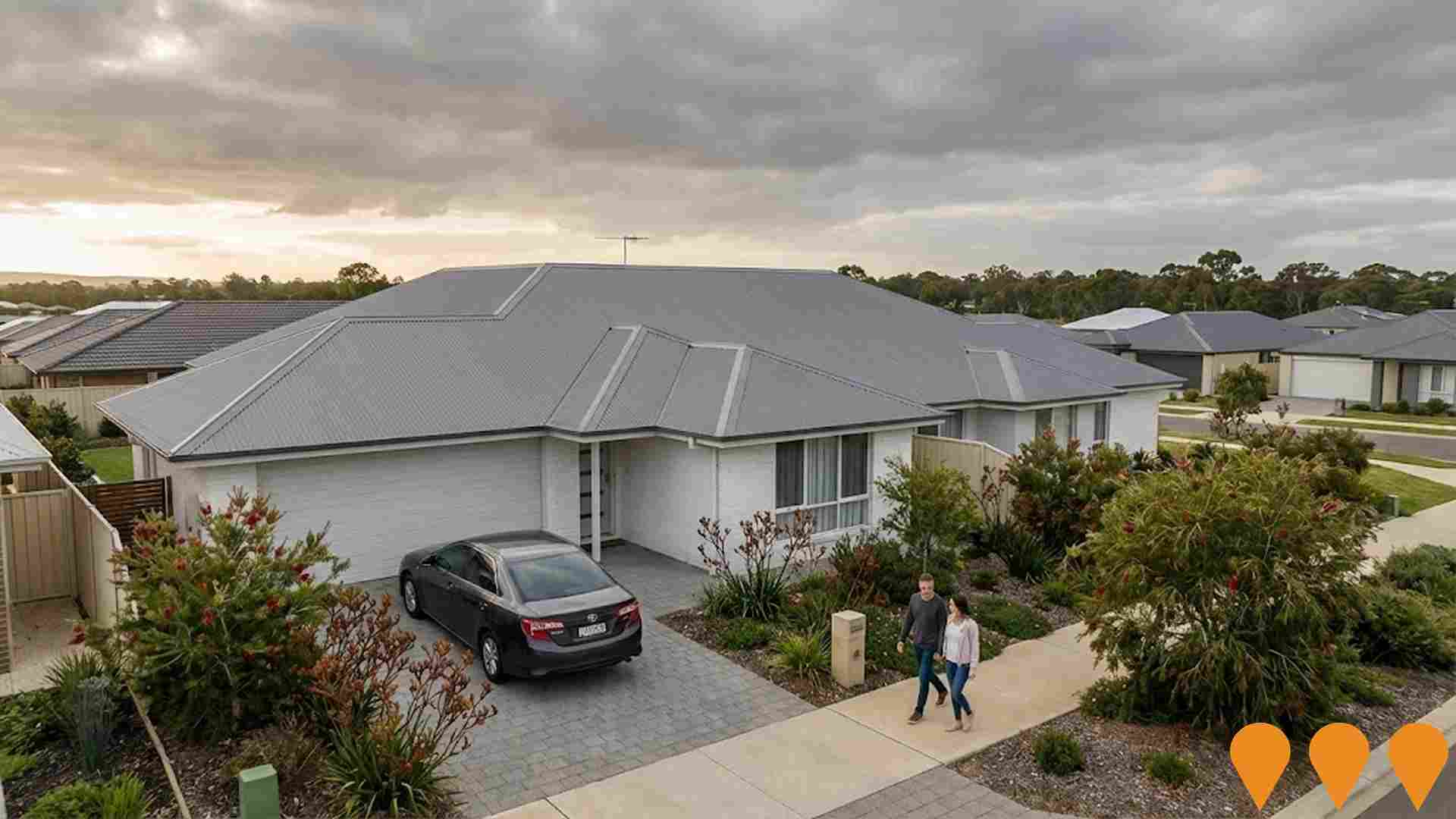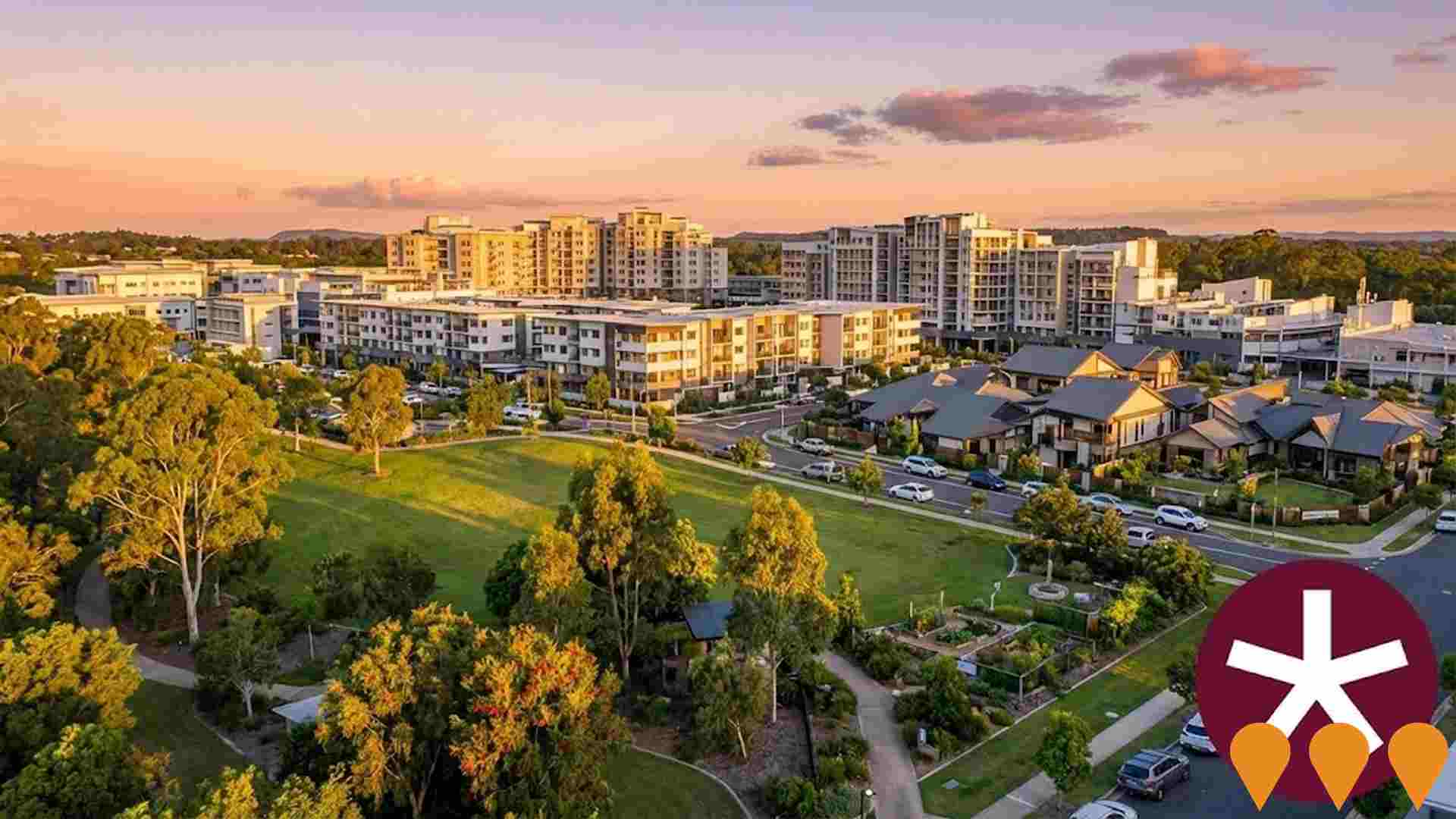Chart Color Schemes
est. as @ -- *
ABS ERP | -- people | --
2021 Census | -- people
Sales Activity
Curious about local property values? Filter the chart to assess the volume and appreciation (including resales) trends and regional comparisons, or scroll to the map below view this information at an individual property level.
Find a Recent Sale
Sales Detail
Population
Toowoomba - West lies within the top 10% of areas nationally in terms of population growth performance according to AreaSearch analysis of short and medium-term trends
Toowoomba - West's population was approximately 18,110 as of November 2025, according to AreaSearch's analysis. This figure represents a growth of 2,262 people since the 2021 Census, which reported a population of 15,848. The increase is inferred from the estimated resident population of 17,587 in June 2024 and an additional 535 validated new addresses since the Census date. This results in a population density ratio of 112 persons per square kilometer. Toowoomba - West's growth rate of 14.3% since the 2021 census surpassed both the non-metro area average (8.8%) and the national average, indicating strong regional growth. Interstate migration contributed approximately 77.7% of overall population gains during recent periods, with all drivers including natural growth and overseas migration being positive factors.
AreaSearch uses ABS/Geoscience Australia projections for each SA2 area released in 2024 with a base year of 2022. For areas not covered by this data and years post-2032, Queensland State Government's SA2 area projections from 2023 based on 2021 data are adopted. However, these state projections do not provide age category splits, so AreaSearch applies proportional growth weightings in line with the ABS Greater Capital Region projections released in 2023 and based on 2022 data for each age cohort. Looking ahead, significant population growth is forecast for Toowoomba - West within the top quartile of Australian non-metropolitan areas. Based on the latest population numbers, the area is expected to expand by 6,518 persons to reach a total of 24,628 by 2041, reflecting an overall increase of 33.1% over the 17-year period.
Frequently Asked Questions - Population
Development
The level of residential development activity in Toowoomba - West was found to be higher than 90% of real estate markets across the country
Toowoomba West has recorded approximately 169 residential properties granted approval each year over the past five financial years, totalling 846 homes. As of FY26, 56 approvals have been recorded. On average, 3.2 people moved to the area annually for each dwelling built between FY21 and FY25, indicating high demand exceeding new supply. The average construction cost of new properties was $278,000 during this period.
This financial year has seen $118.7 million in commercial approvals, suggesting strong commercial development momentum. Compared to the rest of Queensland, Toowoomba West shows 87.0% higher new home approvals per person. New building activity is dominated by detached houses (96.0%) and townhouses or apartments (4.0%), maintaining the area's traditional low-density character focused on family homes. The location has approximately 107 people per dwelling approval, indicating an expanding market.
Population forecasts predict Toowoomba West will gain 5,995 residents by 2041. Construction pace is keeping up with projected growth, but buyers may face increasing competition as population increases.
Frequently Asked Questions - Development
Infrastructure
Toowoomba - West has emerging levels of nearby infrastructure activity, ranking in the 20thth percentile nationally
Changes to local infrastructure significantly influence an area's performance. AreaSearch has identified 38 projects likely to impact the area. Notable projects include Glenvale Town Centre, Gainsborough Lodge, Glenvale Road Townhouses, and Glenvale Health Hub. The following list details those most relevant.
Professional plan users can use the search below to filter and access additional projects.
INFRASTRUCTURE SEARCH
 Denotes AI-based impression for illustrative purposes only, not to be taken as definitive under any circumstances. Please follow links and conduct other investigations from the project's source for actual imagery. Developers and project owners wishing us to use original imagery please Contact Us and we will do so.
Denotes AI-based impression for illustrative purposes only, not to be taken as definitive under any circumstances. Please follow links and conduct other investigations from the project's source for actual imagery. Developers and project owners wishing us to use original imagery please Contact Us and we will do so.
Frequently Asked Questions - Infrastructure
Glenvale Town Centre
A master-planned mixed-use development including a full-line Woolworths supermarket, retail spaces, fast food, bulky goods, medical facilities, childcare, residential components, tavern, motel, service station, and showroom/hardware/indoor sports facilities to serve the growing Glenvale community in Toowoomba.
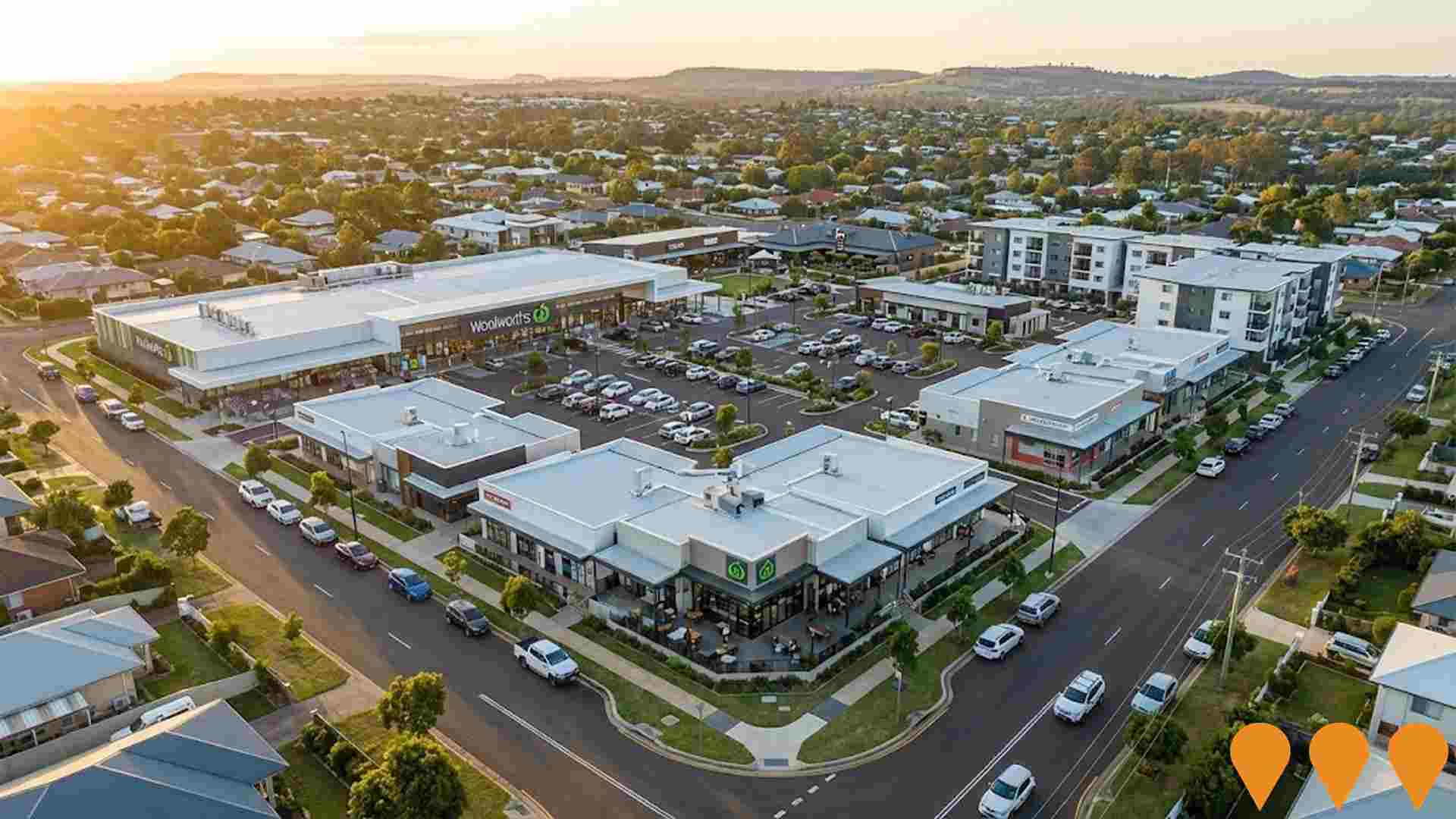
Glenvale Health Hub
A completed multi-building health hub providing GP-led medical services, allied health suites, pharmacy, pathology and imaging, with extensive on-site parking, serving the Glenvale and western Toowoomba community.
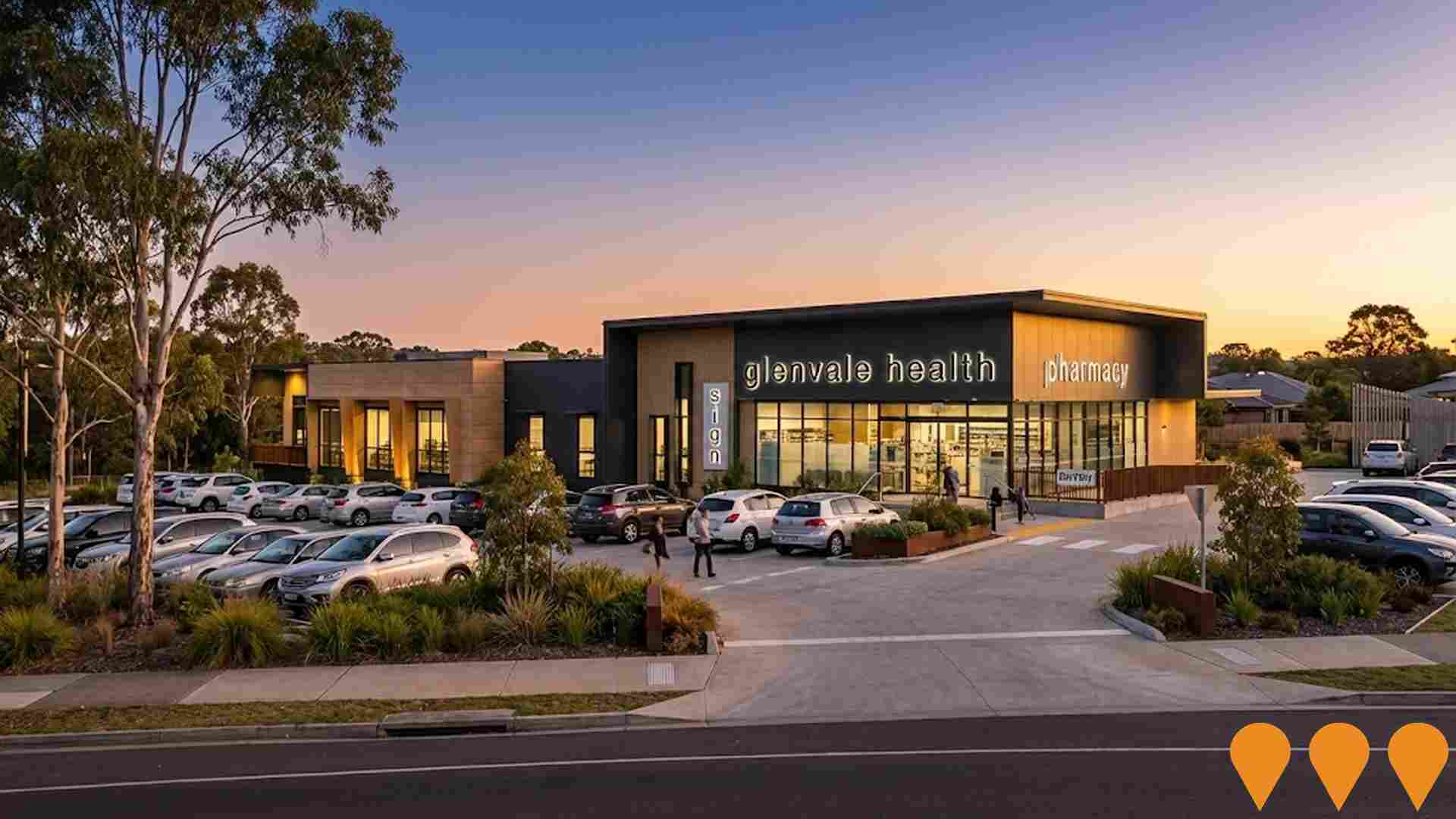
Wilsonton Shopping Centre Redevelopment Stage 2
A multi stage retail redevelopment of the 18,500 sqm Wilsonton Shopping Centre in Toowoombas north west, anchored by Coles and Woolworths. Stage 2 adds about 2,163 sqm of new floor space on the Bridge Street and Richmond Drive corner, delivering a 7 Eleven service station, drive through Starbucks, modern 24 hour gym, car wash and new large format tenancies such as Petbarn, Jetts Fitness and Bridgestone Tyres, alongside upgrades to mall interiors, amenities, outdoor dining and connections between the supermarkets and verandah precinct.

Glenvale Christian School Expansion
Construction of a two-storey building including two classrooms on the lower floor each with a capacity for 20 students, an assembly area on the top floor for 150 students, and a large storage room. The expansion includes an advanced communications system integrated with the schools existing infrastructure, multiple access points with wide concrete pathways, and a suspended concrete bridge for disability-friendly access to accommodate growing student numbers.

South Street Industrial Precinct
Landmark Industrial Development Opportunity in Toowoomba's Core Business Hub - 6.95ha, 50 Titles, Endless Potential! The site offers a large-scale development opportunity with 50 individual titles, 300m frontage to South Street, and access to Anzac Avenue (Gore Highway). Zoned for Low and Medium Impact Industry, it is fully serviced with water, sewer, stormwater, and power, making it shovel-ready. Ideal for subdivision, logistics hub, or tailored precinct, capitalizing on Toowoomba's industrial land shortage.
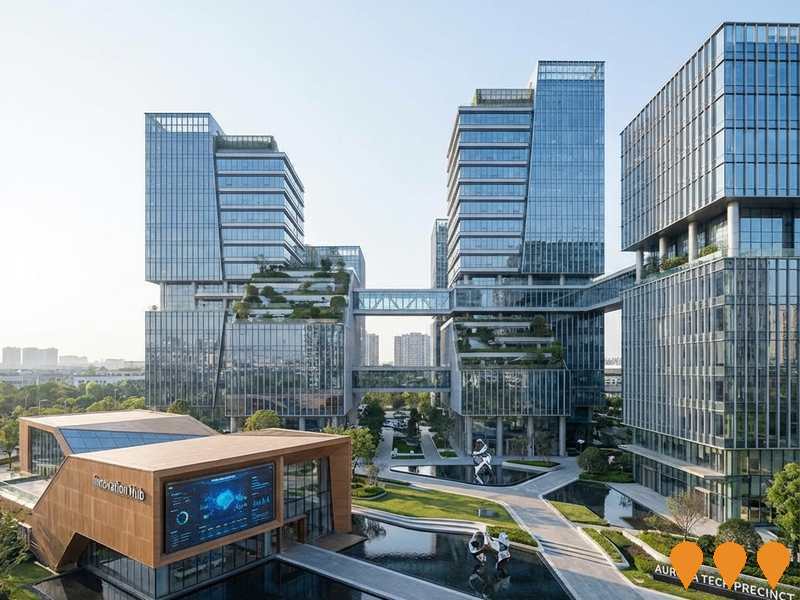
InterLinkSQ Terminal Precinct
A $480 million intermodal freight terminal and logistics precinct development ($200M Phase 1, $280M rail project) on 200 hectares, 13km west of Toowoomba. The facility features 3km of rail infrastructure, connecting to existing West Moreton rail line and future Inland Rail. Designed to be a major multimodal transport hub supporting Inland Rail and regional freight operations, establishing Toowoomba as Queensland's premier inland port. Expected to bring $110 million in construction benefits and $1.075 billion operational benefits.
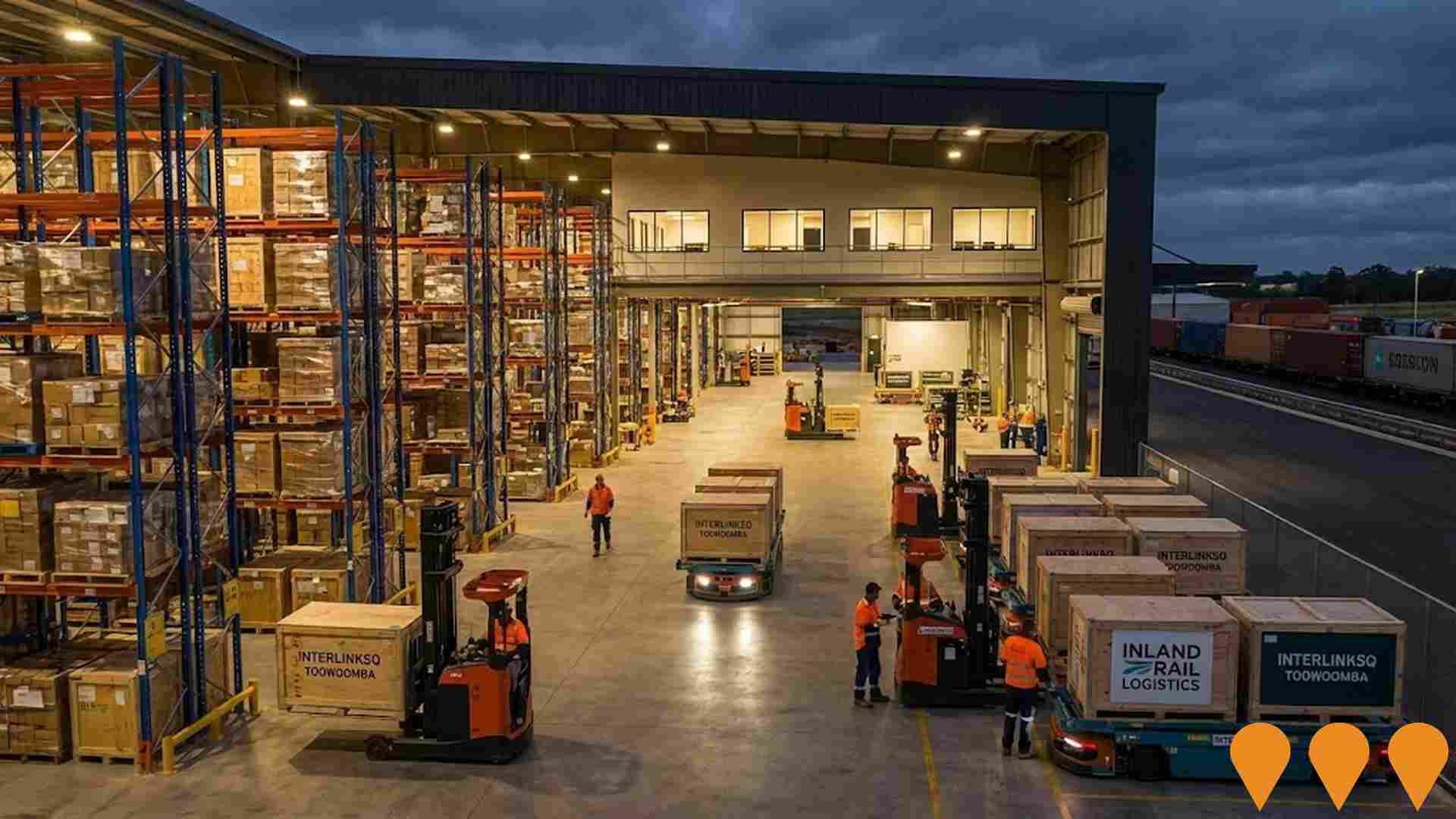
Gainsborough Lodge
A boutique residential subdivision in Glenvale, offering approximately 470 spacious lots ranging from 503m2 to 971m2 in the first stage, featuring tree-lined avenues, peaceful living, and proximity to Toowoomba CBD in a historically rich area.
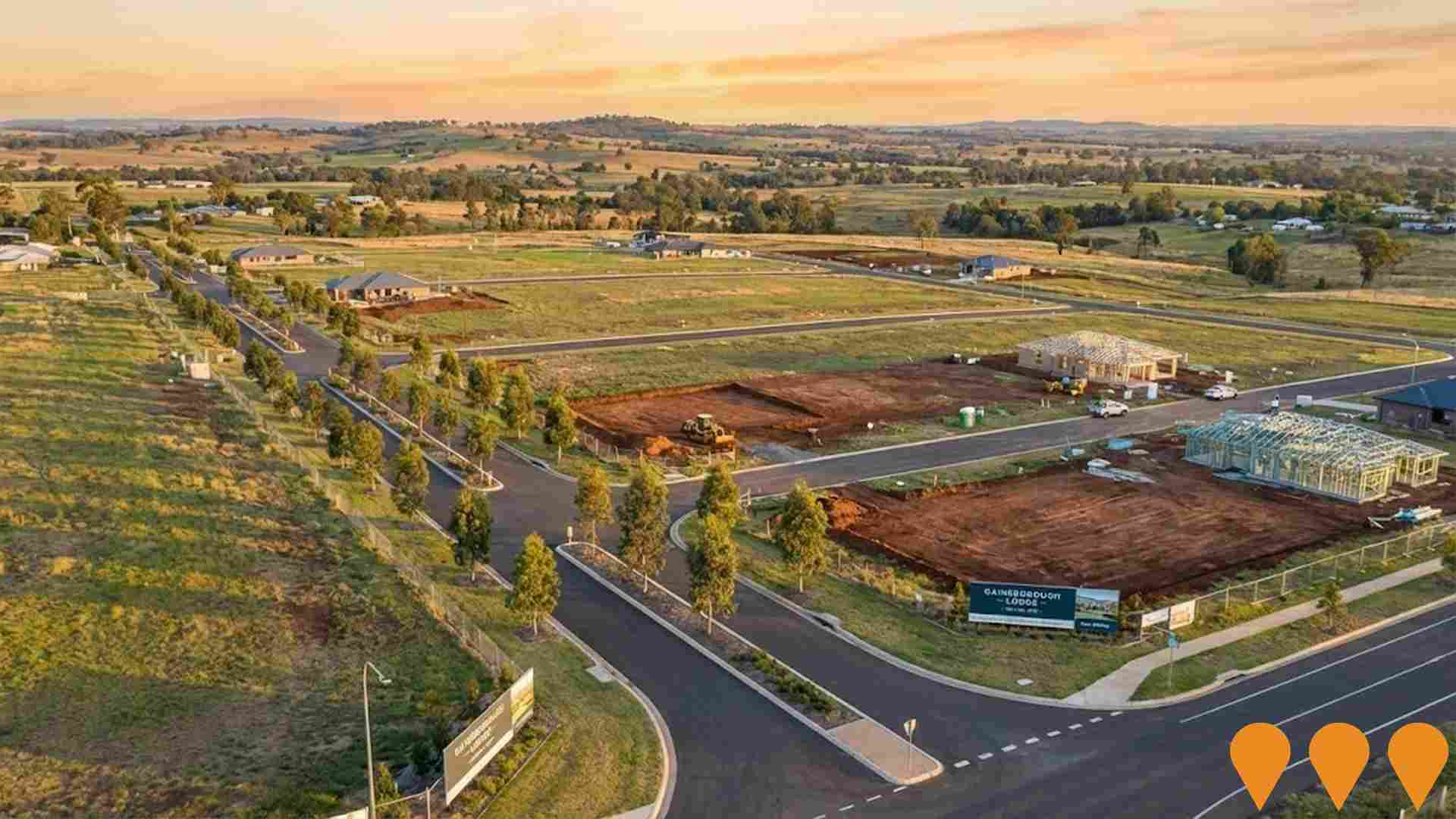
Alford Grove
A master-planned residential community in Glenvale, Toowoomba, featuring 314 lots, extensive green spaces, parklands, over 5km of walking and bike trails, 5,000mý of open space, playgrounds, and thoughtful landscaping. Designed as a natural haven close to Toowoomba CBD, schools, and amenities.

Employment
Employment conditions in Toowoomba - West rank among the top 10% of areas assessed nationally
Toowoomba - West has an unemployment rate of 1.7% as of June 2025. This is lower than the Rest of Qld's rate of 3.9%.
The workforce participation in Toowoomba - West is 67.8%, higher than Rest of Qld's 59.1%. Employment growth over the past year was estimated at 13.9%. As of June 2025, there are 10,368 residents employed in the area. The main industries for employment are health care & social assistance, retail trade, and construction.
Manufacturing is particularly strong, with an employment share 1.7 times the regional level. However, accommodation & food services have a lower representation at 5.9% compared to Rest of Qld's 8.3%. Many residents commute elsewhere for work based on Census data analysis. Over the 12 months to June 2025, employment increased by 13.9%, labour force grew by 13.1%, and unemployment rate fell by 0.7 percentage points. Jobs and Skills Australia's national employment forecasts from May 2025 project a 6.6% growth over five years and 13.7% over ten years nationally. Applying these projections to Toowoomba - West's employment mix suggests local growth of approximately 6.3%% over five years and 13.3% over ten years, based on simple weighting extrapolation for illustrative purposes only.
Frequently Asked Questions - Employment
Income
Income levels align closely with national averages, indicating typical economic conditions for Australian communities according to AreaSearch analysis
AreaSearch's latest postcode level ATO data for financial year 2022 shows that income in Toowoomba - West is slightly lower than average on a national basis. The median assessed income is $51,624 and the average income stands at $63,425. This contrasts with Rest of Qld's figures where the median income is $50,780 and the average income is $64,844. Based on Wage Price Index growth of 13.99% since financial year 2022, current estimates would be approximately $58,846 (median) and $72,298 (average) as of September 2025. According to the 2021 Census figures, household, family and personal incomes in Toowoomba - West cluster around the 58th percentile nationally. Distribution data shows that the $1,500 - 2,999 income bracket dominates with 39.7% of residents (7,189 people), mirroring the metropolitan region where 31.7% occupy this bracket. After housing expenses, 85.8% of income remains for other expenses and the area's SEIFA income ranking places it in the 5th decile.
Frequently Asked Questions - Income
Housing
Toowoomba - West is characterized by a predominantly suburban housing profile, with ownership patterns similar to the broader region
Dwelling structure in Toowoomba - West, as evaluated at the latest Census held in 2016, comprised 85.9% houses and 14.1% other dwellings such as semi-detached homes, apartments, and 'other' dwellings. This is compared to Non-Metro Queensland's structure of 81.4% houses and 18.6% other dwellings. The level of home ownership in Toowoomba - West was at 29.6%, with the remaining dwellings either mortgaged (39.0%) or rented (31.4%). In this area, the median monthly mortgage repayment was $1,733 as of 2016, which is higher than Non-Metro Queensland's average of $1,517. The median weekly rent figure in Toowoomba - West was recorded at $340, compared to Non-Metro Queensland's $310. Nationally, Toowoomba - West's mortgage repayments were lower than the Australian average of $1,863 as of 2016, while rents were less than the national figure of $375.
Frequently Asked Questions - Housing
Household Composition
Toowoomba - West features high concentrations of family households, with a higher-than-average median household size
Family households comprise 77.8% of all households, including 34.2% couples with children, 31.2% couples without children, and 11.2% single parent families. Non-family households account for the remaining 22.2%, with lone person households at 18.9% and group households comprising 3.3%. The median household size is 2.7 people, larger than the Rest of Queensland average of 2.5.
Frequently Asked Questions - Households
Local Schools & Education
Educational attainment in Toowoomba - West aligns closely with national averages, showing typical qualification patterns and performance metrics
The area's university qualification rate is 18.0%, significantly lower than the Australian average of 30.4%. This presents both a challenge and an opportunity for targeted educational initiatives. Bachelor degrees are most common at 13.4%, followed by postgraduate qualifications (2.7%) and graduate diplomas (1.9%). Vocational credentials are prominent, with 40.5% of residents aged 15+ holding them - advanced diplomas at 10.2% and certificates at 30.3%.
Educational participation is high, with 31.2% of residents currently enrolled in formal education, including 10.8% in primary, 9.2% in secondary, and 4.6% in tertiary education. There are seven schools operating within Toowoomba - West, educating approximately 1,442 students, with typical Australian school conditions (ICSEA: 1016) offering balanced educational opportunities. The educational mix includes five primary and two K-12 schools. Local school capacity is limited at 8.0 places per 100 residents compared to the regional average of 17.2, leading many families to travel for schooling. Note that where schools show 'n/a' for enrolments, please refer to the parent campus.
Frequently Asked Questions - Education
Schools Detail
Nearby Services & Amenities
Transport
Transport servicing is very low compared to other areas nationally based on assessment of service frequency, route connectivity and accessibility
Transport analysis indicates 12 active public transport stops operating in Toowoomba - West. These stops offer a mix of bus services. Two individual routes serve these stops, collectively providing 183 weekly passenger trips.
Transport accessibility is rated limited, with residents typically located 995 meters from the nearest stop. Service frequency averages 26 trips per day across all routes, equating to approximately 15 weekly trips per individual stop.
Frequently Asked Questions - Transport
Transport Stops Detail
Health
Health outcomes in Toowoomba - West are marginally below the national average with the level of common health conditions among the general population somewhat typical, though higher than the nation's average among older cohorts
Toowoomba - West shows below-average health outcomes with common conditions slightly higher than national averages among older residents.
Private health cover stands at approximately 51% (~9,272 people), lower than the average SA2 area. Mental health issues and asthma are most prevalent, affecting 9.2% and 8.8% respectively. About 67.5% report no medical ailments, compared to 65.3% in Rest of Qld. The area has 16.2% residents aged 65 and over (2,939 people), lower than the 18.8% in Rest of Qld. Health outcomes among seniors require more attention due to specific challenges.
Frequently Asked Questions - Health
Cultural Diversity
Toowoomba - West ranks below the Australian average when compared to other local markets across a number of language and cultural background related metrics
Toowoomba-West had a cultural diversity score below average, with 87.2% of its population born in Australia, 90.6% being citizens, and 90.7% speaking English only at home. Christianity was the predominant religion in Toowoomba-West, making up 64.2% of people, compared to 58.8% across the rest of Queensland. The top three ancestry groups were Australian (30.0%), English (28.0%), and German (8.6%).
Notably, Filipino representation was higher at 1.6%, while Australian Aboriginal was similar at 3.2%. Irish ancestry was also notable at 8.2%.
Frequently Asked Questions - Diversity
Age
Toowoomba - West hosts a young demographic, positioning it in the bottom quartile nationwide
The median age in Toowoomba - West is 34, which is notably lower than the average for Rest of Qld (41) and substantially lower than the Australian median (38). Compared to Rest of Qld, Toowoomba - West has a higher proportion of residents aged 25-34 (16.9%) but fewer residents aged 55-64 (10.1%). Between the 2021 Census and present, the age group 25-34 has grown from 15.1% to 16.9%, while the groups 5-14 have declined from 14.2% to 12.6% and 45-54 have dropped from 11.9% to 10.8%. By 2041, Toowoomba - West is projected to experience significant shifts in its age composition. The age group 25-34 is expected to grow by 50%, adding 1,522 people and reaching a total of 4,583 from the current figure of 3,060. The growth for the 5-14 group is more modest at 9%, with an increase of only 212 residents.

